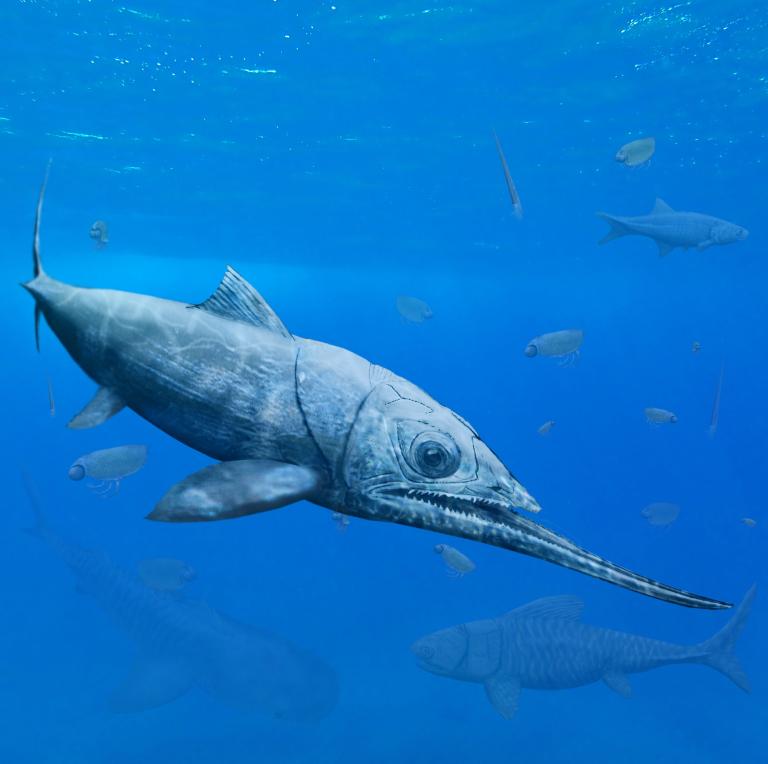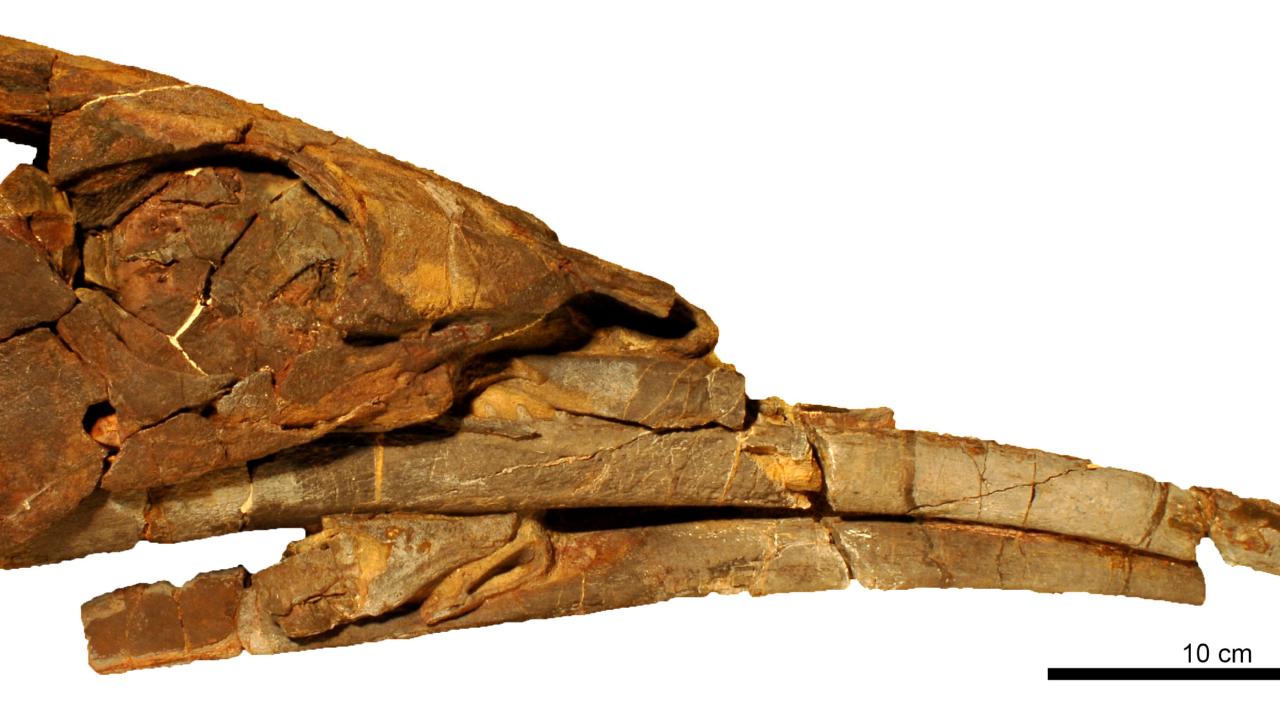
Researchers from - among others - Zürich University and Naturalis helped describe a remarkable fossil fish from 365 million years ago.
Evolution: ancient vertebrates
What do you think of when we say “vertebrates”? You could think about us humans, or other living animals like dogs or zebras. You could also think of the features they share, like a vertebral column. But have you stopped to think about how vertebrates came to be, or how defining features like jaws, teeth, or arms and legs came to evolve?
New fossils of a fish with an underbite, called Alienacanthus, give us a hint that jaws diversified rapidly soon after their origin. Alienacanthus is a member of a group of fish called placoderms, which include some of the first jawed vertebrates. They look like armoured fish of various shapes and sizes and are essential to understanding the evolution of vertebrates and their features, particularly jaws and teeth. Together, placoderm jaws and teeth hold evidence of feeding strategies and diets, giving us insights into what and how some of our fishy ancestors ate.
Weirdspine
Alienacanthus lived ~365 million years ago in what are now Poland and Morocco. When it was first discovered back in 1954 in the Polish Holy Cross mountains, Julian Kulczycki merely had two long thin bones which he thought were some odd, alien-looking, fin spines from a fish, naming it Alienacanthus. In the late 1990s to early 2000s, members of our team came across some Moroccan specimens in the collections of the Muséum National d’Histoire Naturelle in Paris that included the same bony element. Jumping to a few years ago, other members of the team came across more specimens from Poland and Morocco. Together, these fossils identify the animal as a placoderm and highlight its uniqueness in the world of vertebrates. Alienacanthus had a massive, rounded head, large eyes, and most surprisingly of all… the ‘spines’ turned out to be the lower jaws! They extended way past the closing of the mouth, unlike the upper jaws which were of normal length. The teeth were sharp, slightly curved towards the back to trap live prey, and they continued past the closing of the mouth.

Upside downswordfish
The extended lower jaw of Alienacanthus, twice as long as the skull, is unique among placoderms and extremely rare in other living and fossil groups. In most animals, jaw protrusion is seen in the upper jaw, like in the swordfish, or both upper and lower jaws like most ichthyosaurs or gharials. Among living species, only a tiny fish called halfbeak shows an elongated lower jaw. The halfbeak measures just 5-10 cm in length, while Alienacanthus’ head and jaws alone are 80 cm.
In order to accommodate for such a long jaw, the anatomy of the skull, particularly the other mouth elements, had to undergo notable changes. As such, the upper jaws were modified so they could better adjust to the movement with the lower jaw. The shape of the mouth is different than other placoderm. The front of their mouth was rounded while that of Alienacanthus was sharp.
Alienacanthus and relatives lived during a period in Earth’s history called the Devonian, which is also called the Age of fishes. During this time, a variety of fish groups ruled the oceans, including sharks, bony fishes, jawless fishes, and placoderms, which illustrated a wide range of body, head, and jaw shapes. Alienacanthus not only highlights but also stretches that diversity to the limit with such a unique look. During this age of fishes, the evolution of more complex jaws allowed for a diversification in feeding and hunting methods. The oldest placoderms favoured a fast-closing mouth for fish eating. Later in time, some placoderms started feeding on hard prey, and others may have been filter-feeders. Alienacanthus used its sharp teeth to catch and trap live prey, possibly using its elongated jaw to confuse or injure its future meal, as seen in swordfish or some ichthyosaurs.
The further back in time we go, the more our planet’s continents looked different. During the Late Devonian period, when Alienacanthus lived, Poland was situated on the Northeastern coast and Morocco on the Southern coast of a vast ocean. The presence of the same species on both sides shows that migration occurred in that Ocean at that time, despite sea level fluctuation.
More information
- The article Extreme lower jaw elongation in a placoderm reflects high disparity and modularity in early vertebrate evolution was published in Royal Society Open Science.
- Naturalis' author is Dr. Martin Rücklin.
- Last author prof. dr. Christian Klug of the Universität Zürich is also the one who made the artist impression of Alienacanthus shown above.